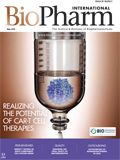Using Single-Use Systems in Aseptic Fill-Finish
Material compatibility, material sourcing, facility layout, and training are crucial aspects of a successful disposable fill-finish system.
Single-use systems (SUS), also called disposable technology, can improve manufacturing efficiency by reducing the time needed for cleaning and cleaning validations. In addition, using SUS reduces the cost associated with cleaning. For a multiproduct facility, SUS mitigate cross-contamination risks. Contract manufacturing organization Grand River Aseptic Manufacturing (GRAM) recently expanded its disposable technology capabilities at its FDA-approved manufacturing facility in Grand Rapids, Michigan and has identified additional benefits. “Compared to stainless-steel systems, process development times with SUS are reduced and there is greater flexibility in process design, which contributes to an overall lower capital cost,” says Steve Nole, GRAM’s director of manufacturing. It is important, however, to understand the challenges associated with using SUS and to have plans in place to mitigate risk. Nole and Amanda Hawkins, GRAM’s manager of sterile operations, spoke with BioPharm International about some of the best practices the company has implemented in using SUS.
Keys to successBioPharm: What have you found are the keys to successfully using disposable technology?
GRAM:GRAM is an advocate of disposable technology, but some customers may be hesitant to use it, especially if they have an existing process. Open-mindedness from the client is, therefore, the first step in using disposable technology for a project. We have found that clients with processes at the earlier stages are more open to using disposable technology because of its benefits.
The next step is checking for compatibility between the client’s material and the disposable technology materials. GRAM can conduct early-phase testing internally before a project moves forward. Once a project reaches the commercial scale, a formal leachable and extractable study must be performed; these studies are typically outsourced to an independent, third-party testing laboratory.
Another key is careful planning for material sourcing. Standard bags, for example, are readily available, but custom-built configurations can have long lead times. We must forecast and have these in stock, because a client may not be able to wait four months to start a project. On the other hand, materials have an expiration date. There is a fine balance between having the right amount of inventory in stock and having an excess that’s at risk of expiring and going unused. As a best practice, we are developing a ‘library’ of what sizes of bags and what types of tubing and connectors will work best with certain products, so that we can have these on hand and know what to use.
Handling componentsBioPharm: What best practices have you identified for handling the tubing and fluid path?
GRAM:We have standardized the fluid path, although there are some slight variations depending on the specific process. All areas where the tubing will be are designated and consistent, so that the operators are familiar with and comfortable working around the tubing. In the aseptic processing area, the tubing is elevated to avoid trip hazards.
It is important to plan an efficient layout. Long tubing lines can be minimized by placing the formulation vessel in the formulation room as close as possible to the receiving vessel in the aseptic processing area. Another practice is to filtrate in bulk rather than continuously, so that a one-time transfer from formulation vessel to receiving vessel can be performed and the tubing removed after the transfer.
Connectors are a key component and there are many different options. Some are genderless, and others have male/female ends and are more complicated to put together. Some are more difficult than others to make sure they are fully connected. All the operators have had ‘touch time’ with the connectors and have practiced how to use them outside of the aseptic processing areas, as well as during media fill validation. There is a technique to pulling straight down and not too fast, for example.
BioPharm: What are the concerns for storing, handling, and inspecting the supply of disposable components?
GRAM: Since some disposable technology can be used for different purposes, it is essential to organize and label all material correctly in storage so that operators can identify and choose the correct equipment.
All personnel that will be handling the disposable technology should be trained on the impact of damaged material. It is crucial to inspect the disposable materials for tears, rips, and particles. The inner and outer bags should be inspected at receiving to make sure they are integral. Extra attention must be paid to following correct processes for moving equipment into the cleanroom environment. Bags containing the disposable equipment should not be opened until they are in the GMP-controlled environment. Once transferred to the sterile area, bags should be inspected again and checked to make sure there are no particles before the disposable equipment comes into contact with the product.
Some components and even preassembled systems come presterilized using gamma irradiation. Or, for a more flexible approach, the user can assemble the system and then autoclave it. Disposable components must have data records and certificates of compliance from the vendor. We also audit the disposable technology material manufacturers and their validated sterilization gamma-irradiation process.
Article DetailsBioPharm International
Vol. 29, No. 5
Pages: 46–47
Citation:
When referring to this article, please cite it as J. Markarian, "Using Single-Use Systems in Aseptic Fill-Finish," BioPharm International 29 (5) 2016.

Thermo Fisher Opens Advanced Therapies Collaboration Center in California
April 18th 2025The 6000-square-foot facility will provide cell therapy developers the support they need to transition to CGMP manufacturing, and an expanded footprint of the new center is expected to open in Philadelphia later in 2025.